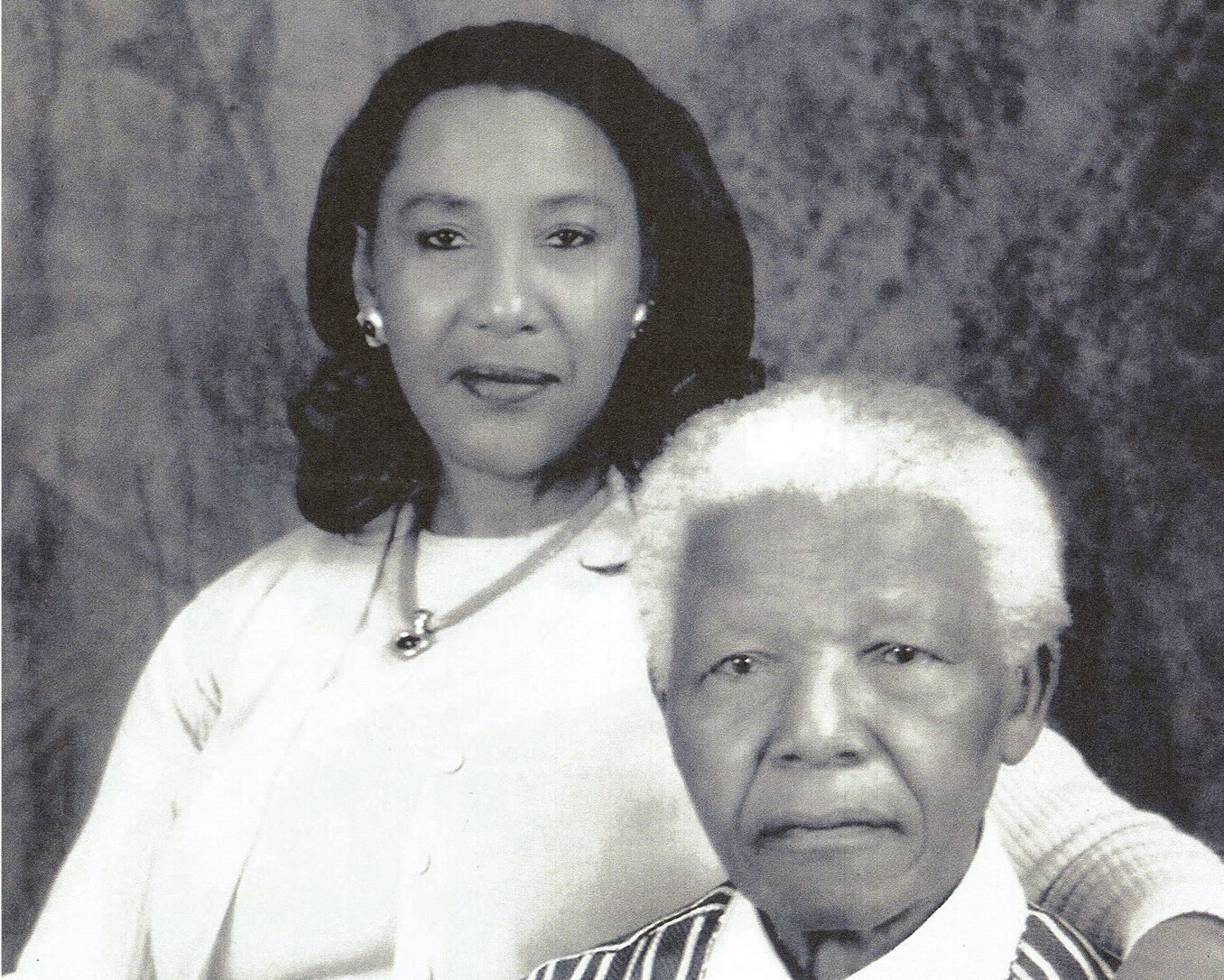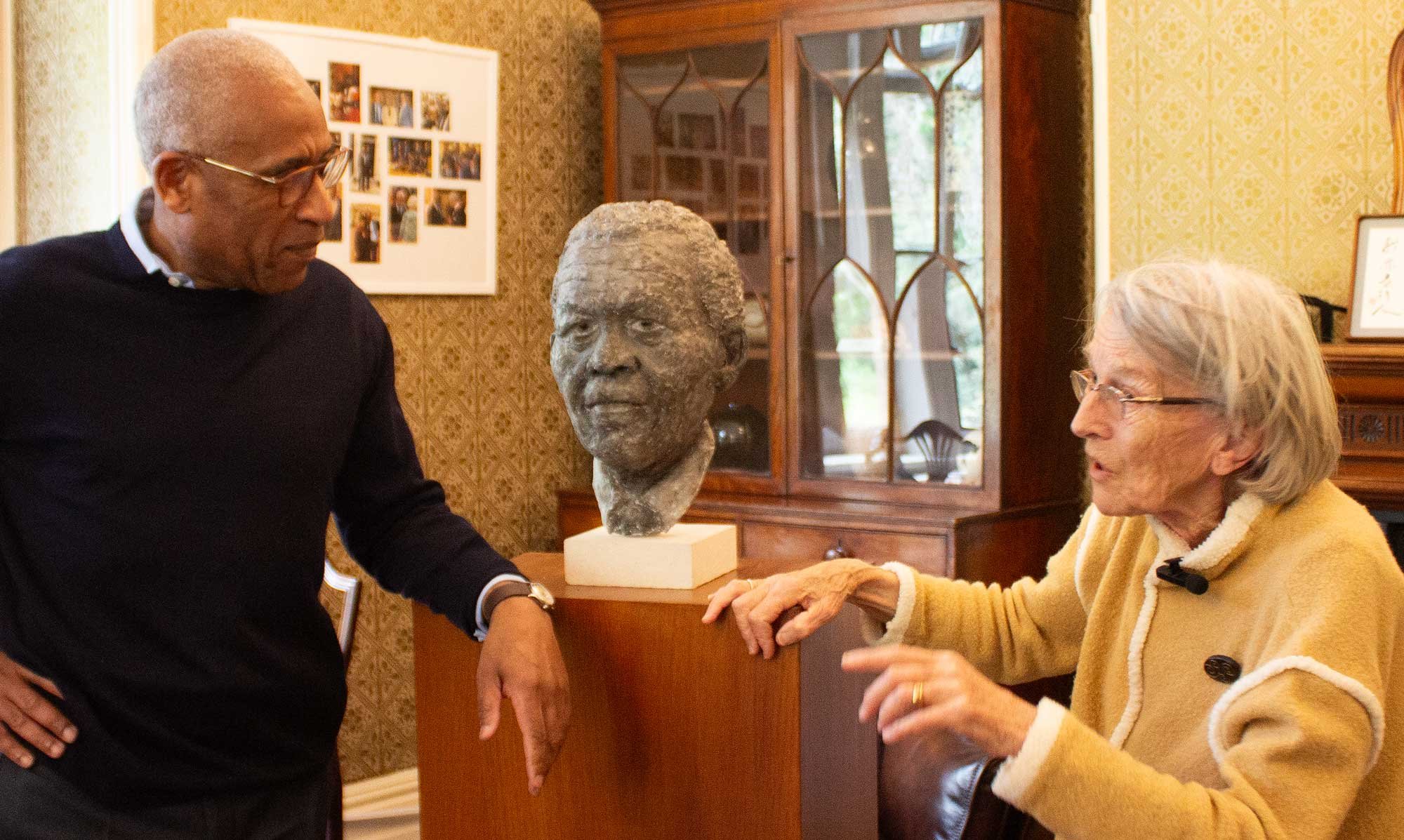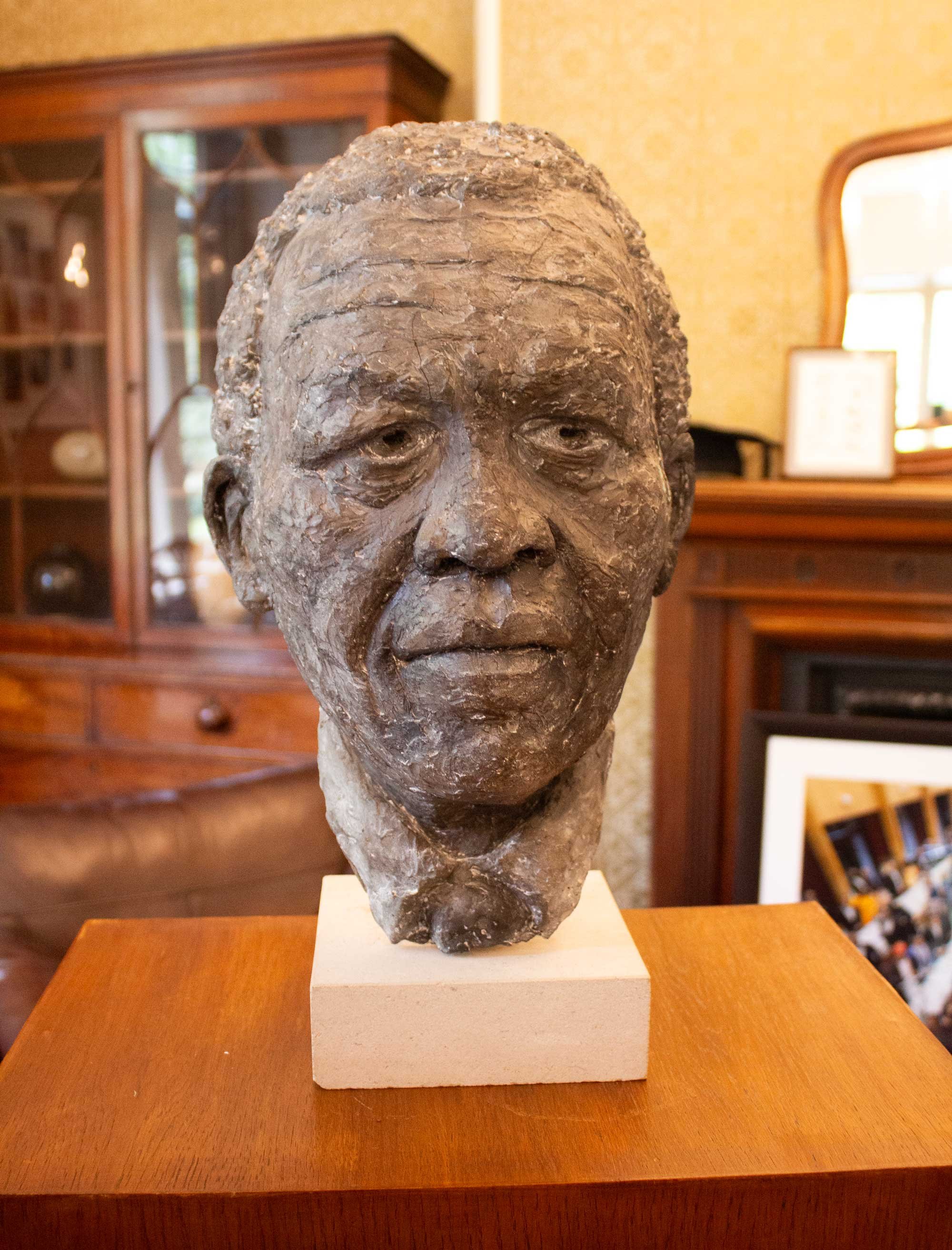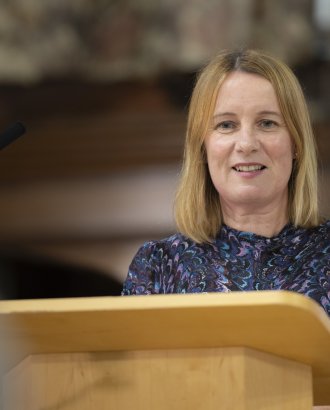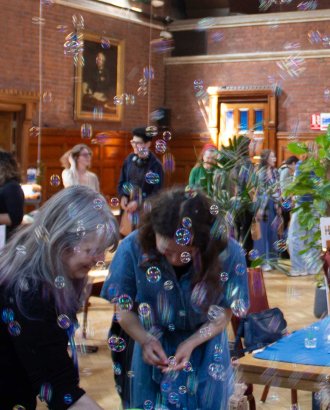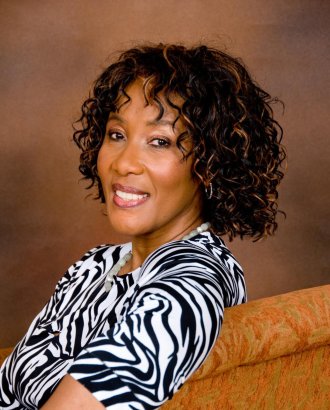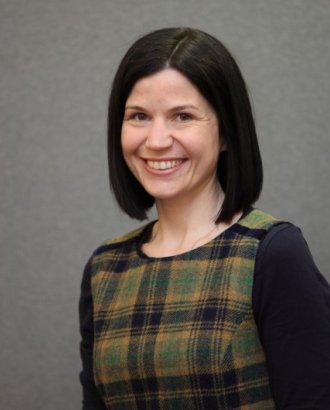NELSON MANDELA'S daughter, Makaziwe "Maki" Mandela-Amuah, thanked the Homerton alum sculptor who donated a bust of the late icon to the college.
In a video message recorded in South Africa, Maki expressed her appreciation that the bust, made by retired teacher Jo Standeven, would be displayed at Homerton.
Rohlihlahla Nelson Mandela, 'Tata' to his children and 'Madiba' to many others, including his Xhosa tribe, became the prime international symbol of resistance to Apartheid in South Africa during his 27 years in prison. As leader of the African National Congress, he served as the first President of a free South Africa from 1994 to 1999 following the collapse of Apartheid and helped hold the country together in that turbulent period.
Maki, daughter of Mandela and his first wife Evelyn Mase, said: "I'd like to send a message of appreciation that my father's bust will be held at Cambridge. And I am glad that 14 years after my father passed away, people around the world still remember him fondly for his fight for justice, for peace, for freedom, for a more diverse and inclusive world, for a world that is free from ignorance and arrogance of the other."
And I think, I hope, that as people view this [bust], they are reminded that there is good in all of us and that it is our responsibility and accountability to contribute, to make this world a truly a peaceful, harmonious and a better world."
The tribute was made at a gathering hosted by Principal Lord Simon Woolley, with Jo Standeven and her husband John. Homerton's newly-appointed art curator, Eddie Akinrinmade, is leading the effort to identify the best location to display the bust, which will be followed by an installation ceremony.
Lord Woolley said: "What an afternoon, hosting Jo, who has bestowed to Homerton College a bust of the great Nelson Mandela. It's not just for me, it's for the college and for visitors to see this iconic civil rights global icon.
"Now we've got our own bust of the great man that I hope will encourage and inspire our students, black and white, to know him, to know his values and to live up to the ideals that we can have a greater world, a greater space when you, as individuals, make a difference. I'm beyond pleased."
Mandela passed away in December 2013 at the age of 95. Jo, who spent much of her career teaching deaf children, recalled being enthralled by his visit to the UK after his release from prison in 1990.
The idea to sculpt a bust of Nelson Mandela arose after Jo learned that Mandela would be visiting Essex University to support his wife, who was receiving an honorary degree. I wanted to do justice to him. It was a challenge but a very positive experience, stemming from his amazing personality," she shared.
She said: "We tracked him [as he drove in]. He was in his 70’s. He was being taken by car up to where he was being picked up and taken to another building and we ran across the grass when he came out of that, we ran across the grass. So I got quite close to him and I did a few sketches and later on, I saved some black and white photographs from the local papers." Those sketches and photographs inspired her to make the bust, which she is now donating to the college.
Her journey to becoming the sculptor of Mandela bust is a story of passion and perseverance, shaped by personal challenges and pivotal moments. Her initial interest in education stemmed from her family circumstances, including a deep-seated desire to support her deaf brother, which led her to pursue teaching.
She said: “I wanted to leave school to care for my sick mother and teach deaf children, inspired by my brother's disability." This drive brought her to Homerton College, where she was given the freedom to explore various subjects, ultimately discovering her love for sculpture. "Homerton was transformative; it allowed me to choose whatever subject I liked," she recalled. "I chose to teach sculpture, which I found very therapeutic."
Jo's artistic journey began with an incident that occurred shortly after the big flood on the East Coast by the River Orwell. "I picked up some London clay from the sea wall and made a little head, which we later placed in a bonfire on the beach. That was my first real awareness of how much I enjoyed modeling," she recalled.
Her family background, deeply rooted in practical skills like making and sewing, also played a significant role in nurturing her artistic talents. Balancing her personal life with her artistic ambitions, Joanna faced the constraints of her time, "I was busy with kids and family, often going home at lunchtime," she mentioned, reflecting on her early career.
Jo matriculated in 1957 and studied for the Certificate of Education and graduated in 1958. Homerton left a significant imprint on Joanna, shaping not only her career but her personal life as well. "I wrote about how much Homerton meant to me. I lived the experience of cycling everywhere in Cambridge and found a photo with the roommate I shared a room with," she reminisced.
Despite opportunities to pursue further education in art, her familial responsibilities remained her priority. "I could have gone to art college after Homerton, but I wasn’t free to; my brother was as young as Princess Diana’s boys when she died."
Throughout her life, she has worked extensively with the community, particularly teaching deaf people, which she describes as akin to "the sun coming out." Her advice for current Homerton students is: "Get involved!"
Additional reporting: Reem Fatthelbab
